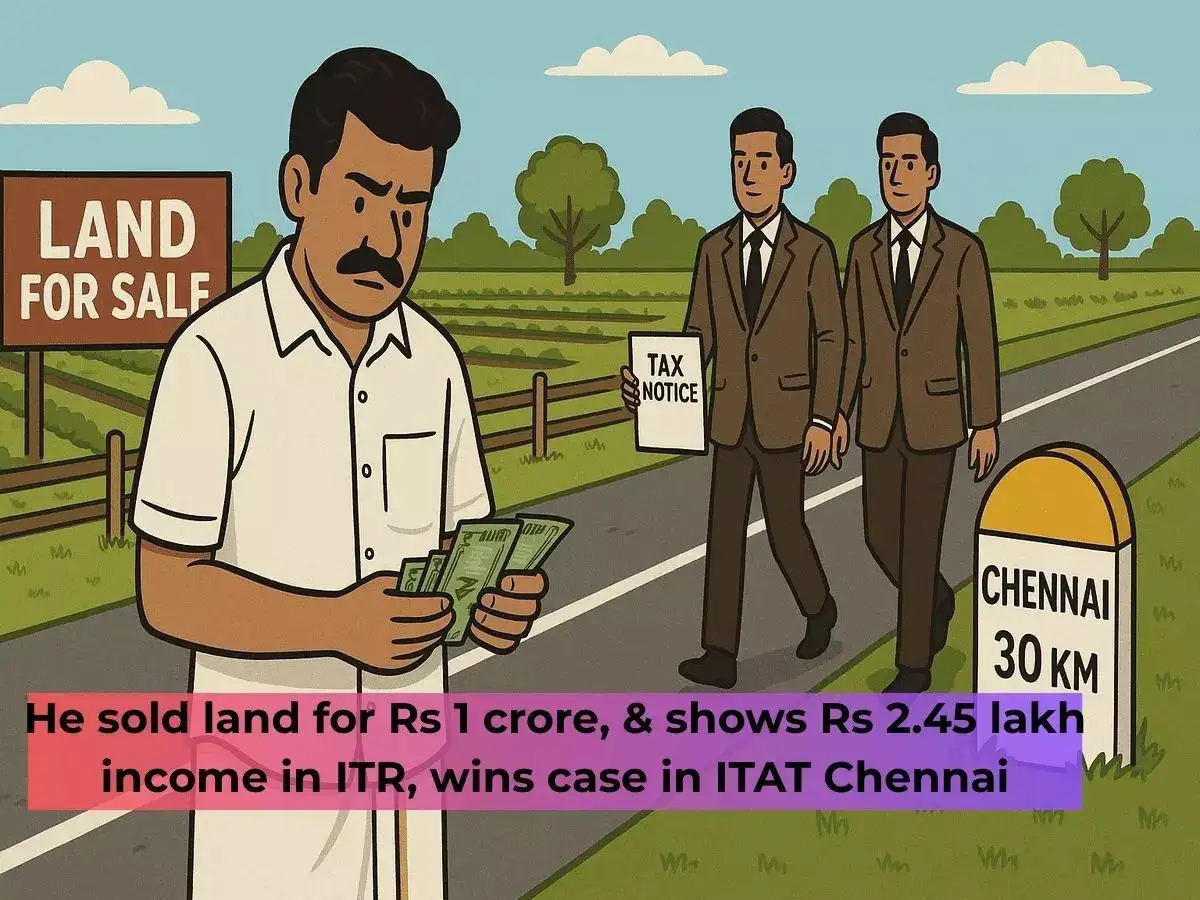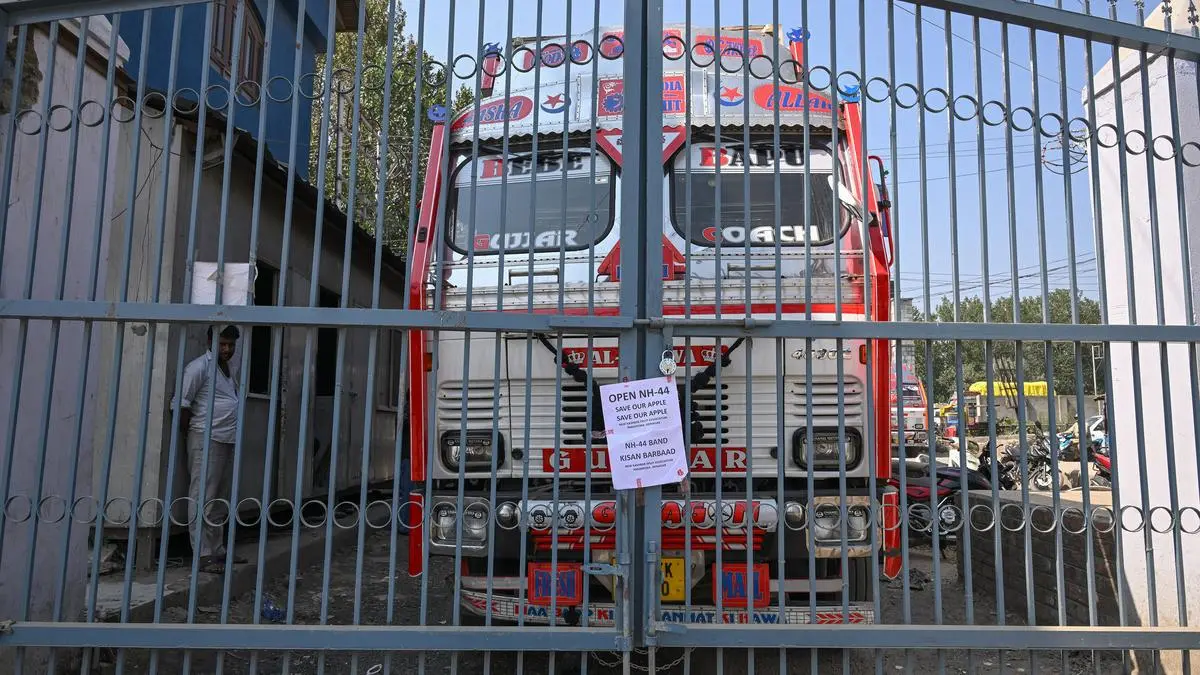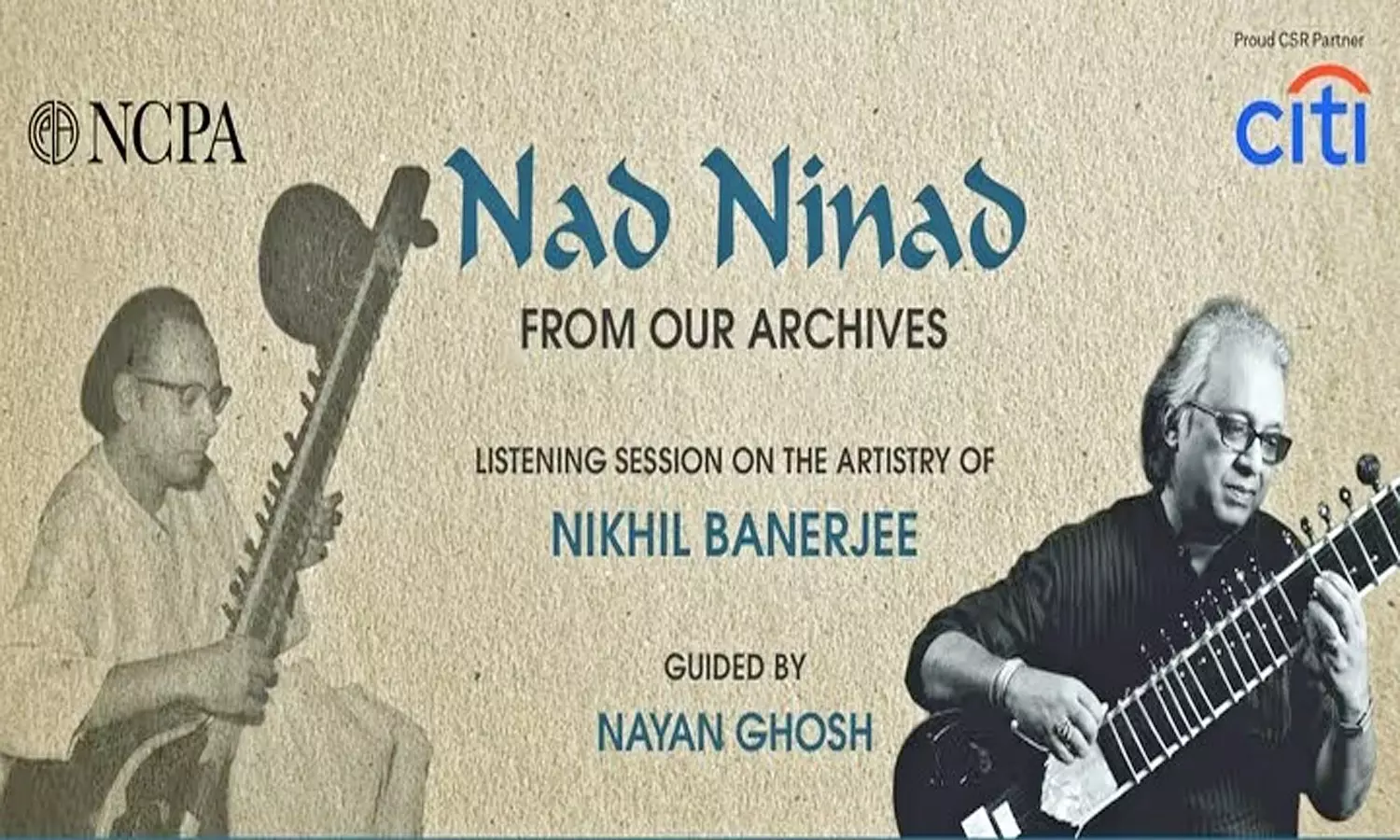He sold ancestral land for Rs 1 crore but in ITR showed only Rs 2.45 lakh income; Wins case in ITAT Chennai due to this reason
By Neelanjit Das
Copyright indiatimes

On October 14, 2013, Mr. Natesan sold 121 cents or 0.31 acres of his family’s ancestral agricultural land in his village and got Rs 1 crore (Rs 1,00,44,000) for this. The portion of land that he sold represented 25% of the area of the toal land available and so for the remaining 75% portion of the land he got an additional Rs 1.5 crore as an advance money.Income Tax GuideIncome Tax Slabs FY 2025-26Income Tax Calculator 2025New Income Tax Bill 2025With the Rs 1 crore that he got, Natesan bought a residential house property for Rs 82 lakh, claiming capital gains tax exemption under Section 54F. You can claim tax exemption under Section 54 of the Income Tax Act, 1961 if you have sold any asset other than a residential house and reinvested the long- term capital gains (LTCG) into buying a residential house property in India.However, the year he sold his 25% share of the family’s ancestral agricultural land, Natesan didn’t file any Income Tax Return (ITR). The income tax department only found out about his land deal when they conducted a survey operation in the land buyer’s premises. Based on the evidence and information collected from the land buyer’s records, the income tax officer re-opened Natesan’s file and completed his income assessment under Section 144 with respect to Section 147 on March 26, 2022. The tax officer determined Natesan’s income to be Rs 2.47 crore.But in Budget 2021 when the Finance Minister amended the tax laws as a result of which the tax officer had to re-do Natesan’s income calculation as per the amended laws. Consequently, the tax officer passed an order under Section 148A(d) and, thereafter, issued a notice under Section 148 on July 30, 2022. In response to this notice, Natesan filed his ITR on November 15, 2022, admitting a total income of Rs 2.45 lakh (2,45,610).The tax officer rejected his ITR and initiated the assessment proceedings and noticed a lot of things. One significant issue which the tax officer noticed is was that Natesan had received Rs 2.5 crore in connection with the land sale. Accordingly, the tax officer issued a show- cause notice asking Natesan to explain why the full amount of Rs 2.5 crore should not be brought to tax as capital gains.In response to this show-cause notice, Natesan answered that the said land is “agricultural land” as per the meaning of Section 2(14) of the Income Tax Act, 1961, and accordingly no liability to capital gains tax arose on such sale. The tax officer, however, did not accept Natesan’s explanation. The tax officer said that the land in question was considered a “capital asset” within the meaning of the Income Tax Act, 1961 and, therefore, was liable to capital gains taxation. On that basis, the tax officer computed the long-term capital gains at Rs 2.45 crore (2,45,19,108), by adopting the entire receipt including the advance for the balance land as sale consideration at Rs 2.5 crore. After finalising this calculation, the tax officer added Rs 2.47 crore to Natesan’s income and completed the assessment under Section 147 on March 21, 2023. This assessment now meant that Natesan is liable to pay income tax on Rs 2.47 crore income. Hence, Natesan filed an appeal against this assessment order before the commissioner of appeals (CIT A). On September 25, 2024, CIT (A) dismissed the appeal and thus Natesan filed an appeal in Income Tax Appellate Tribunal (ITAT) Chennai.On September 1, 2025, ITAT Chennai allowed Natesan’s appeal and ordered the tax officer to take the sale consideration as Rs 1 crore and compute the long-term capital gain after allowing the exemption under Section 54F considering the investment of Rs 82 lakh made towards purchase of a house property by him.Also read: Wife’s four gold bangles of 998 purity seized by customs dept; she wins the case in Delhi High Court due to this reasonRead on to find out the reasons behind Natesan’s victory in this case and why his agricultural land was considered as an urban land, which is considered a capital asset.Chennai ITAT lists what is the issue for determinationS.S. Viswanethra Ravi, judicial member and S.R. Raghunatha, accountant member of ITAT Chennai in its order (ITA No.:2873/Chny/2024) dated September 1, 2025 said:The issue that arises for determination is whether the land situated at Kancheepuram District, transferred by the assessee (Natesan) during the impugned assessment year, qualifies as agricultural land excluded from the definition of “capital asset” u/s 2(14) of the Income Tax Act, 1961, or whether it falls within the ambit of urban land taxable as capital asset.”Also read: Husband bought property for Rs 60 lakh jointly with wife; Income tax dept sent her notice for unexplained investments; she wins case in ITAT DelhiITAT Chennai answers why this agricultural land is to be considered as urban land taxable as capital assetITAT Chennai said that the Income Tax Department’s case rests on the assertion that by virtue of the 2011 expansion of the Greater Chennai Corporation, Semmencherry village was included within the corporation limits, and the distance between Semmencherry and the impugned land is less than 8 kilometres. Consequently, in view of the statutory prescription u/s.2(14)(iii)(b) of the Income Tax Act, 1961, the impugned land is to be regarded as a capital asset.Also read: Get full tax exemption on sale of farm land by using this tax provisionITAT Chennai further noted that Natesan has not been able to establish, with cogent evidence, that the distance between Siruseri and Semmencherry exceeds 8 kilometres.Also read: Granddaughter can’t claim a share in maternal grandfather’s property in this condition, rules Bombay High Court ITAT Chennai said : “In the absence of such proof, and having regard to the statutory framework, we are inclined to accept the findings of the Revenue authorities (Income Tax Department). Accordingly, we hold that the land in question constitutes a “capital asset” within the meaning of Section 2(14) of the Income Tax Act, 1961, and that the transfer thereof during the impugned assessment year is liable to capital gains tax.”Also read: Even if you made zero capital gains income from sale of property you still need to pay tax in this situation; CA explains whyITAT Chennai reduces his taxable capital gains from Rs 2.5 crore computed by tax officer to Rs 1 croreITAT Chennai noted that the undisputed facts are that Natesan is the owner of vacant land measuring 121 cents situated at Kancheepuram District. On October 9, 2013, Natesan executed a registered General Power of Attorney (GPA) in favour of one Mr. Anbuvelrajan authorising him to deal with the said land, including powers of sale, development, and allied rights.Also read: He got Rs 89 lakh as gift from relatives; Tax dept doubted its genuineness, but ITAT Mumbai ruled in his favour: Here’s why ITAT Chennai said that on perusal of the said registered General Power of Attorney (GPA) it clearly reveals that the execution of the power of attorney did not amount to a transfer of ownership or possession of the land in favour of the power agent.Also read: Income Tax Department finds Rs 5 crore cash in his house; Know how a 2008 circular saved him from prosecution ITAT Chennai said that it can be further noted that no consideration was received by Natesan for execution of the said power of attorney. Hence, by mere execution of the GPA, no transfer of a capital asset within the meaning of section 2(47) of the Income Tax Act, 1961, had taken place in favour of Mr. Anbuvelrajan. Moreover, the GPA holder is not the buyer of the vacant land held by Natesan and is only authorised to deal with the prospective buyers.Also read: Pay more than Rs 20,000 in cash for these transactions and get ready to pay up to 100% penalty, says tax deptITAT Chennai further noted that from the record it is clear that Mr. Anbuvelrajan, acting under the authority of the said GPA, executed a registered sale deed dated October 14, 2013 transferring only to the extent of 30.35 cents (out of the total 121 cents) in favour of the land buyer for a sale consideration of Rs 1,00,44,000.Also read: She sold her house for Rs 2.7 crore to buy seven new flats and paid no income tax, wins case in ITAT Delhi; Know how ITAT Chennai said that it is also not in dispute that the actual transfer of land during the relevant assessment year was restricted only to the said extent of 30.35 cents and the sale consideration received in respect thereof was Rs 1,00,44,000.Also read: Father sells house worth Rs 67 lakh and shows only Rs 1,690 income in ITR, wins case in ITAT Ahmedabad; Know how ITAT Chennai said: “Hence, we find that considering the balance amount as sale consideration for the impugned assessment year by the AO (tax officer) is erroneous.”Also read: Inherited property taxation: Know how to save capital gains tax on sale of inherited property or landThe ITAT Chennai said that in the absence of cogent material, the mere receipt of funds, if any, from the power agent cannot be equated with the transfer consideration for the impugned sale transaction, particularly when there was no transfer of the capital asset to the power agent himself. The legal position is well settled that unless possession and ownership of the property are transferred in pursuance of a registered instrument, coupled with actual consideration from the purchaser, the same cannot be regarded as “transfer” within the meaning of section 2(47) of the Income Tax Act, 1961.Also read: Father receives Rs 4 lakh as cash gift in son’s marriage and wins income tax case of unexplained income; ITAT Ahmedabad ruling explainedITAT Chennai said: “In view of the above, we direct the AO to recompute the long-term capital gains by adopting Rs 1,00,44,000 as the full value of consideration. Consequently, the addition of Rs 1,49,56,000 (Rs 2,50,00,000 less Rs 1,00,44,000/-) made by the AO is hereby deleted.”Also read: No income tax for lady who sold land for Rs 4.5 crore; Know how a 1955 circular and established case laws saved the day for herITAT Chennai allows Section 54F tax exemption claim for this land saleITAT Chennai said that it is not the case of the Income Tax Department that Natesan is otherwise ineligible for tax exemption under Section 54F of the Income Tax Act, 1961.Also read: Owning bigger apartment means higher maintenance payment? Here’s what Bombay High Court says ITAT Chennai said that the only point of dispute raised by the CIT(A) pertains to the nature of evidence furnished by Natesan, particularly the construction bills, which were produced on plain paper and, according to the CIT(A), lacked proper supporting documentation.Also read: Wife gets tax notice for husband’s Rs 6.75 crore Mumbai house purchase; Bombay High Court gives relief to wife ITAT Chennai said that on careful examination of the material placed on record, it is evident that Natesan had in fact undertaken construction of a residential house property and had incurred substantial expenditure towards the said construction out of the sale consideration received.Also read: Section 87A tax rebate can be claimed for short term capital gains income under new tax regime, rules ITAT Ahmedabad ITAT Chennai said that the lower authorities ought to have undertaken a proper verification of the assessee’s bank account statements in order to ascertain whether the expenditure claimed was actually incurred.ITAT Chennai said that on perusal of Natesan’s bank account statements, they note that there are significant cash withdrawals as well as payments made towards construction. These entries provide corroborative evidence that Natesan did not merely make a paper claim of exemption under Section 54F of the Income Tax Act, 1961 but had indeed expended monies towards the construction of the residential property.Also read: No income tax for son who sold late mother’s flat for Rs 1.45 crore to buy seven houses; how a minor language error helped himITAT Chennai said that it is therefore not a case where Natesan has sought to avail exemption under Section 54F of the Income Tax Act, 1961 without incurring any real or tangible cost. ITAT Chennai said: “When sufficient bank transactions comprising both withdrawals and payments are demonstrably available in support of the claim, the exemption cannot be disallowed solely on the ground that the supporting vouchers or bills are on plain paper or not in the preferred form. Substance must prevail over form, particularly when the evidence otherwise substantiates the incurring of expenditure for the purposes envisaged under Section 54F.”Also read: Wife pays no income tax after selling two houses for Rs 6 crore gifted by her husband, wins case in ITAT Mumbai; here’s how it happenedITAT Chennai final judgementITAT Chennai in its order dated September 1, 2025, pronounced in open court said the following:“In the peculiar facts and circumstances of the case, we are of the considered view that the assessee (Natesan) is entitled for exemption under Section 54F in respect of the investment made towards construction of a residential house, aggregating to a sum of Rs 82,15,610.” “The AO is directed to grant exemption u/s.54F of the Act for the said sum and to recompute the long-term capital gains chargeable to tax after giving effect to the same.In the result, the ground of appeal raised by the assessee on this issue stands allowed.”Judgement: “In view of the foregoing, to make it clear, we direct the AO to adopt the sale consideration at Rs 1,00,44,000/- instead of Rs 2,50,00,000/- for the purpose of computing the taxable long-term capital gains. Further, the AO is directed to compute the long-term capital gain after allowing the exemption u/s 54F of the Act considering the investment of Rs 82,15,610 made towards house property by the assessee. In the result, the appeal of the assessee is partly allowed. Order pronounced in the court on 01st September, 2025 at Chennai”



